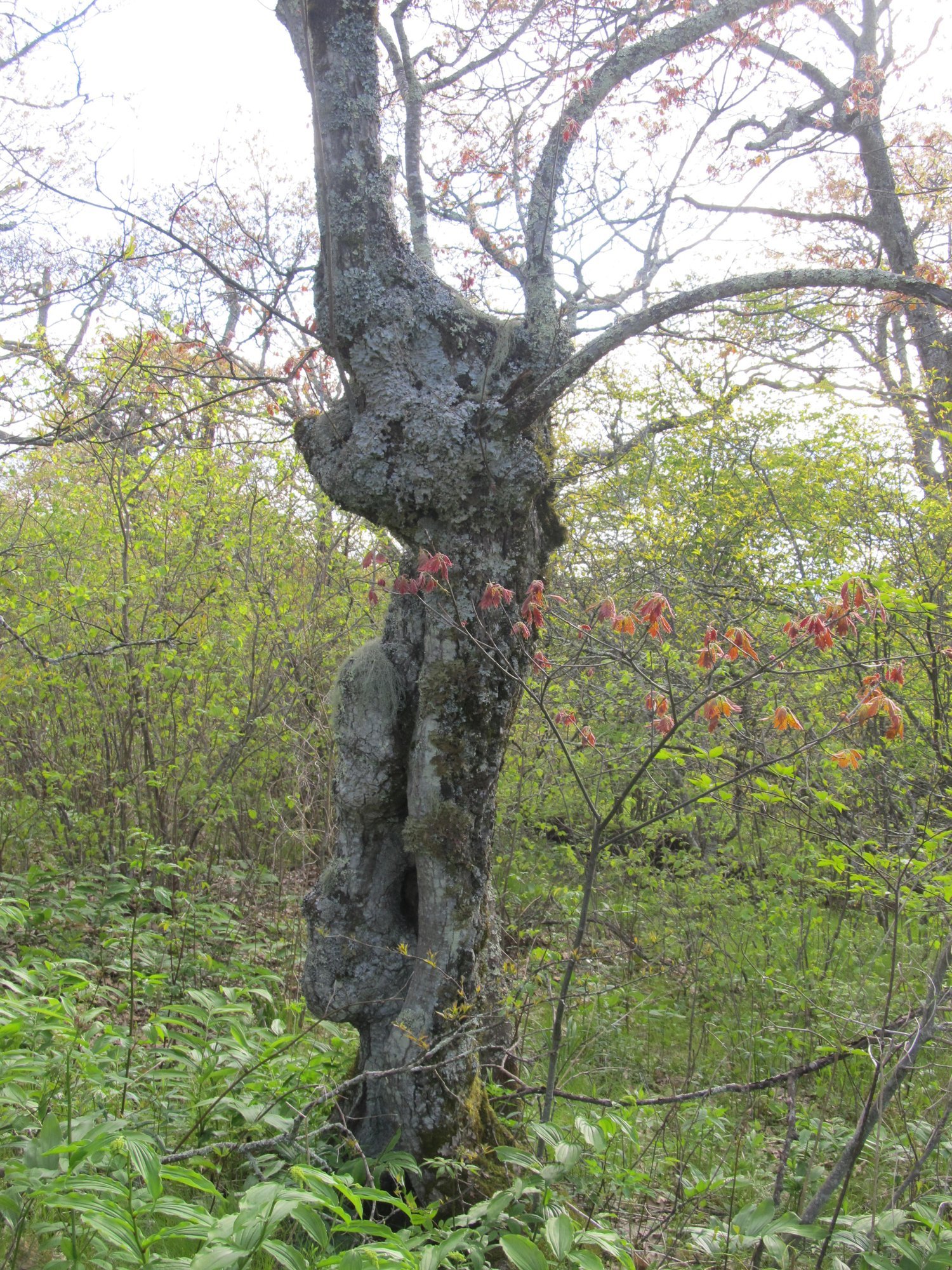From a Letter to a Fellow Curator
For the last couple of months I have been taking off a few hours early on Monday afternoons so my son Anders and I can take a short drive and go for a walk in the forest with our dog. Back on June 1st we went to that same place you and I visited when you were here in November, the trail with all the gnarly old red oaks, although he and I skipped the visit to the rickety old fire tower. In spite of the calendar date, the seasonal state of development at that elevation was springtime, and the oak leaves were small and had that appealing pale orange-salmon color they do when they're first unfurling. It was a beautiful day with soft clouds in a mild blue sky, and though it was rather warm back in town, up in the mountains there was a gentle cool breeze, and this was in the evening so as we walked along and time passed the descending sun began throwing long shadows and casting the earth in golden tones. The trees looked wonderful and this time I had my camera along.
Back at work the next day I could feel the influence of the time spent among those trees coming out in the decisions I was making while doing pruning on various deciduous bonsai. This is exactly how I want it to be — fill my eyes with the sight of nature's example and then let that experience flow unselfconsciously through my hands and into the shape of the tree I'm working on. Unselfconsciously is the key. If there's any thinking going on I don't want to know about it. You want to shape the bonsai as if you are a force of nature, which after all you are, but one that isn't so cripplingly self-conscious, acting instead out of impulse like the wind or the lightning or the bug that bores into the wood. So satisfying it is to work this way, and so simple to do once thinking is done away with. But so difficult it is to let go of thinking.
As an example of current work in this vein I'll offer up a few pictures of a parrotia in development. My friend Ken donated this six or seven years ago, growing at that time in a felt pot maybe 10" in diameter. I put it into a big wooden box and grew it a bit to put some heft in the trunk. Here's the first picture I have of it, taken in spring of '17:
I haven't been very good about keeping a pictorial record with this one, because the next photo I have of it is from this spring:
Here's the other side:
You can maybe visualize what the process has been — grow it for a year, whack it back hard, see what the tree does next. Trunks and limbs that need to bulk up are left to grow for a while but eventually get headed back, often by breaking rather than cutting. The box it was in had been used for other trees in development prior to this one, serving for more than 20 years before finally falling apart this spring when I picked it up. The parrotia was ready for a root pruning anyway, and a shift down into a smaller, albeit still oversized pot. It happened, though, that this tree was worked on two days after the trip up the mountain to see those gnarly red oaks, so it got treated accordingly. Here's how it looked after the work, and after it had leafed out:
The tree is starting to take shape, although nothing says it won't dramatically change its look next year or the year after or the year after that! It depends what happens between now and then. It depends on what the tree does as it grows, and what happens to it outside of the actions I take in regard to it; for example, if it loses some parts in a bout with fungus or falls off the bench one bad day. It depends on what I'm seeing when I work on it next time and the time after that, and how I'm feeling at the time. There is no layout, no blueprint, no grand plan. Oh yes, I've heard the "masters" can see 50 years into a bonsai's future! But I am no master, just a guy with a pair of cutters, feeling my way along in an ongoing dialogue with another living organism. It's a process, but not one founded on a preconceived idea rigidly followed and forced upon the subject. It's a slow motion act of creation, and a two-way street.
“If there’s any thinking going on I don’t want to know about it.”









